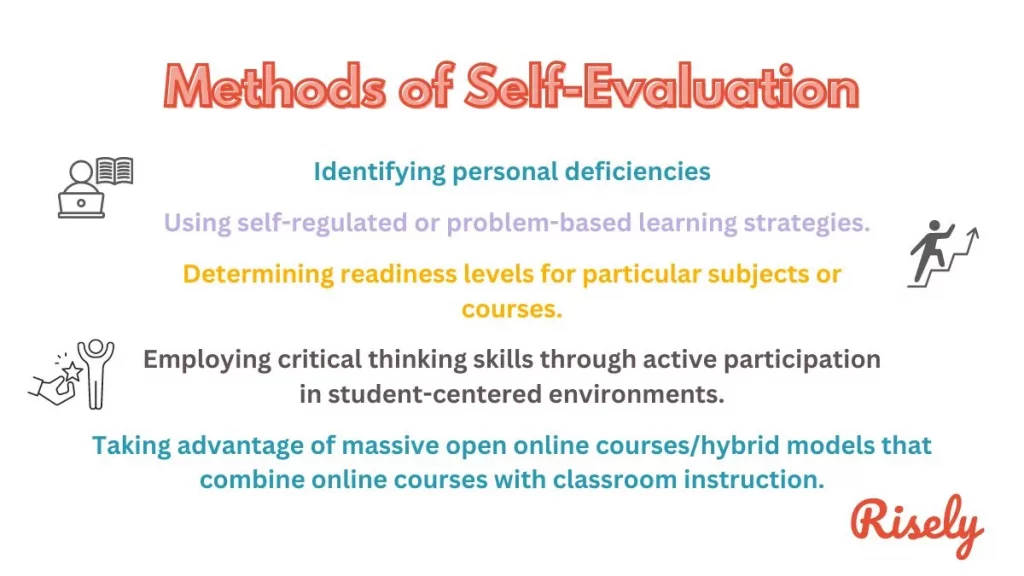7 Best Tips to Guide Self-Directed Learning at Work
In today’s fast-paced world, learning is no longer confined to the classroom. With self-directed learning, you can take charge of your professional development and enhance your skills at work. But what exactly is self-directed learning? What are its benefits and challenges? How can L&D professionals implement it in the workplace? In this blog, we will answer all these questions and more. We will explore the strategies and tools to help you become a successful self-directed learner, including ways to encourage peer-to-peer support. We will also discuss the importance of self-evaluation and how it can aid in career development. So get ready to take control of your learning journey with our seven best tips for self-directed learning at work.What is Self-Directed Learning?
Self-Directed Learning is the process of individuals taking charge of their learning, setting goals, developing strategies, and evaluating progress. It can be achieved through online courses, workshops, or reading materials. Succeeding requires self-motivation, discipline, and a desire to learn independently. What does it look like? Let’s see with a few examples –A marketing team member takes the initiative to learn about emerging social media trends and platforms by researching online articles, attending webinars, and experimenting with new strategies during their free time. They apply their self-directed learning to propose innovative marketing approaches to their manager.
A software developer identifies a knowledge gap in a programming language required for an upcoming project. They take the initiative to enrol in an online course, complete coding exercises, and seek out relevant resources to enhance their skills. Through self-directed learning, they become proficient in the programming language, benefiting both themselves and the team.
A manager recognizes the need for improved project management skills within the team. They independently study project management methodologies, read books on effective leadership, and attend relevant workshops to enhance their knowledge. They then share their newfound insights with the team, implement efficient project management practices, and guide team members in adopting these approaches through coaching and mentoring.
Learn more about effective methods of training employees here: Top 13 methods of employee training to boost workforce performanceBenefits of Self-Directed Learning
Taking on the primary responsibility of one’s learning is the essence of self-directed learning. This approach involves identifying personal learning needs, developing strategies to meet those needs, and evaluating progress toward learning outcomes. Self-directed learners can utilize various methods such as online courses, workshops, reading materials, or seeking help from others in their learning journey. The benefits of self-directed learning go beyond improving job performance and increasing career opportunities; it includes:- Greater sense of ownership and responsibility: Self-directed learners take ownership of their own learning, which can lead to a greater sense of responsibility and accountability for their progress.
- Flexibility and adaptability: Self-directed learners are often more flexible and adaptable, able to adjust their learning strategies as needed to meet changing needs and circumstances.
- Lifelong learning: By developing the skills and habits necessary for self-directed learning, individuals are better equipped to continue learning throughout their lives, opening up new opportunities for personal growth and development.
Challenges of Self-Directed Learning
Learning at one’s own pace is a dream come true for anyone who wants to take charge of their education. However, self-directed learning comes with its own set of challenges. Learners must be disciplined and committed to achieving their goals when engaging in this learning process. It involves setting goals, identifying resources, and evaluating progress by reflecting on the journey. While managers have an understanding of what’s stopping them, it is likely that they make errors without expert guidance. Self-directed learners are expected to be goal-oriented and capable of managing their learning experience without relying on external help. This type of learning can take place in various formats, such as online courses, hybrid courses, podcasts, or even subject matter books available on the internet. However, a challenge arrives in creating a structure out of these abundant and unverified resources. With the huge number of individuals offering learning and insights, it is hard to decipher facts among the cacophony and easier to fall in traps. While self-directed learning has been the go-to method for many managers and teams, new innovations are making this easier. With the advent of emerging technologies like Artificial Intelligence and Machine Learning, AI-based solutions are bringing unforeseen advantages for inquisitive managers. For instance, Risely, the AI co-pilot for leadership development helps managers and upcoming leaders discover structured learning paths that are designed to achieve personalized professional goals. You can read more about this here: Becoming The Best Manager: Why AI Co-Pilot Overtakes Manual Solutions?How Can L&D Champion Self-Directed Learning?
In today’s dynamic workplace, self-directed learning (SDL) is no longer a fringe concept but a critical component of successful employee development. L&D professionals can leverage SDL to cultivate an adaptable, intrinsically motivated, and continuously growing workforce. 1. Needs Assessment and Goal Setting Conduct workshops to help employees identify skill gaps and areas for improvement to set SMART learning goals (Specific, Measurable, Achievable, Relevant, and Time-bound). Develop assessment tools that identify skill gaps and uncover preferred learning styles. This allows L&D to curate resources that cater to individual preferences (e.g., visual learners benefit from infographics and video tutorials).Example: An employee aiming to improve their public speaking skills could aim to ” deliver a confident and engaging presentation to the team within two months, incorporating storytelling techniques learned from an online course.”
2. Curated Resources and Learning Platforms Provide access to a diverse learning ecosystem, including online courses (MOOCs, microlearning modules), ebooks, audiobooks, industry publications, and internal knowledge repositories. Partner with relevant industry experts and educational institutions to create custom content for coaching to help employees while keeping organizational needs in mind.Example: Curate a library of online courses on project management software relevant to a specific team’s upcoming implementation. Additionally, develop short video tutorials created by in-house project management experts showcasing best practices on the new software.
3. Fostering Collaboration and Mentorship Create online forums and communities where employees can share knowledge, ask questions, and support each other’s learning journeys. Utilize social learning platforms incorporating gamification elements to boost engagement and knowledge sharing. Facilitate a mentorship program pairing senior employees with junior colleagues for guidance and skill development. Create a mentorship program with structured onboarding, goal setting, and progress-tracking mechanisms to ensure a successful learning exchange. 4. Recognition and Feedback Implement recognition programs that celebrate employees pursuing SDL initiatives and demonstrating acquired skills. Develop a multi-tiered recognition system that acknowledges course completion and the application of learned skills in real-world projects.Example: Offer badges or rewards for completing online courses or achieving learning milestones. Additionally, recognize employees who successfully implement learned skills to improve project outcomes through team meetings or company newsletters.
Provide regular feedback mechanisms, such as peer reviews or coaching sessions, to help learners gauge progress and identify areas for improvement. Use learning management systems (LMS) with built-in feedback features and progress tracking tools. Conduct anonymous peer reviews after project completion to encourage constructive feedback on newly acquired skills. 5. Leading by Example L&D professionals can champion SDL by actively engaging in ongoing professional development and sharing their learning experiences with the team. Dedicate a segment of team meetings for L&D professionals to share key takeaways from recently attended conferences or completed online courses. This inspires others and fosters knowledge exchange within the L&D team.Example: Attend industry conferences, participate in online learning communities, and share key takeaways with colleagues through presentations, blog posts, or internal knowledge-sharing platforms.
Implementing these strategies in greater depth can help L&D professionals cultivate a culture of self-directed learning that empowers employees to take charge of their professional growth. This, in turn, leads to a more skilled, adaptable, and future-proof workforce.Self-Evaluation in Self-Directed Learning
Self-evaluation plays a significant role in the self-directed learner’s journey toward lifelong learning. It involves assessing one’s strengths, weaknesses, and areas of improvement to set appropriate learning goals. Continuous reflection on one’s learning experience ensures that the learner remains on the right track toward achieving these goals at their own pace. Feedback from peers can help enhance this process further; hence, creating a positive relationship with fellow team members or experts in the subject matter is advisable to assist when necessary. Effective methods for self-evaluation include:
Self-Directed Learning and Career Development
Taking charge of one’s professional development is essential in today’s competitive world. Self-directed learners can customize their learning process and set achievable goals to enhance their career prospects. By utilizing problem-based learning approaches and reflecting on their experiences regularly, they can improve their skills while ensuring they remain up-to-date with industry advancements. Learners who engage in self-directed education are known for being proactive in seeking knowledge and understanding beyond the classroom environment. With the help of others in a robust learning community or network of like-minded individuals who share similar interests, they can achieve success while enjoying the process.How to Use Self-Directed Learning for Professional Development?
Self-directed learning empowers individuals to lead their professional development by setting clear goals, creating a detailed plan, and using online resources. Prioritize dedicated time for learning and seek guidance from mentors or colleagues. Reflect on how newfound knowledge can be applied to work for optimal success.Creating Customized Learning Plans for Self-Directed Learners
To ensure success in the self-directed learning process, self-directed learners need to create customized learning plans. These plans involve identifying their learning goals and objectives while considering their preferred learning styles. Furthermore, they can select relevant resources and courses based on their identified needs. Setting realistic timelines with milestones that allow monitoring of progress is also crucial. Finally, being open to feedback from others helps to adjust the plan accordingly.Overcoming Common Barriers to Success in Self-Directed Learning
Some common barriers to self-directed learning include:- Lack of motivation: Without external pressure or accountability, it can be difficult to stay motivated and focused on your learning goals.
- Limited resources: Finding the right resources and materials for self-directed learning can be a challenge, particularly if you don’t have access to specialized equipment or technology.
- Time management: Self-directed learning requires discipline and time management skills to stay on track and make progress toward your goals.
- Isolation: Learning on your own can be a lonely experience, without the social support and interaction that comes from traditional classroom settings.
- Self-doubt: When you’re relying solely on yourself for guidance and feedback, it’s easy to become overwhelmed by self-doubt and uncertainty about your abilities.
Conclusion
To wrap up, self-directed learning is a powerful tool to help you grow personally and professionally. It empowers you to take control of your own learning and career development. However, it can also be challenging without the right strategies and tools. To succeed in self-directed learning, setting achievable goals is crucial, regularly evaluating your progress, seeking peer-to-peer support, and using the right learning resources. Doing so can unlock your potential and help you achieve your career goals.Don’t let your learning fall into traps of misinformation!
Save your professional growth from traps with the help of AI co-pilot that creates solutions for you.
Start testing your skills now.
Self-directed learning FAQs
What is self-directed learning?
What is the key to self-directed learning?
What are the 5 steps of self-directed learning?
Assessing learning needs: Identifying gaps in knowledge or skills and determining specific learning goals.
Setting objectives: Defining clear and measurable objectives to guide the learning process.
Planning learning activities: Developing a structured plan, selecting appropriate resources, and scheduling study time.
Engaging in learning: Actively participating in learning activities, such as reading, researching, practicing, or seeking mentorship.
Evaluating learning outcomes: Reflecting on progress, assessing acquired knowledge or skills, and adjusting learning strategies if necessary.
Other Related Blogs


